Life Extension Magazine®
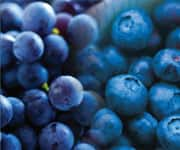
Consumers hear a lot today about “healthy foods” that are shown to prevent disease.
Missing from news broadcasts are details about how to benefit from specific plant components that published studies document help protect against degenerative disorders.
In seeking to clarify their knowledge base, scientists are focusing a lot of research on compounds known as anthocyanins, which provide berries and other plants with their rich deep red and purple colors and have been proven to combat multiple pathways of disease.1,2
In this report, we provide you with research findings about various anthocyanin-rich plants and how you can access their disease prevention benefits.
Hidden in berries and other plants are diverse bioactive compounds that provide broad-spectrum protection against cognitive decline, diabetes, cancer, and heart disease.1-4
According to the National Institutes of Health, “There is accumulating evidence that much of the health-promoting potential of berries may come from phytochemicals, the bioactive compounds not designated as traditional nutrients.”5
What the National Institutes of Health is saying is that the disease prevention properties of healthy plants extends beyond the vitamins and minerals they naturally supply.
Anthocyanins: Powerful Antioxidant Protection
Extensive research confirms that the most powerful antioxidant berries are those that contain a class of polyphenols known as anthocyanins. These nutrients create the deep red, blue, and purple pigments found in plants such as blueberries, elderberries, blackberries, and açaí.1,6-8 Berry anthocyanins strongly combat oxidative stress, a causative factor in the pathogenesis of many major diseases1 such as Parkinson’s disease,9 Alzheimer’s disease,10 amyotrophic lateral sclerosis (ALS),11,12 cancer,13 and allergic disorders.14
In a new development, scientists are suggesting that superior free-radical defense is just part of the berry benefit story.
Mechanisms: Beyond Antioxidant Activity
Recent evidence indicates that anthocyanin-rich foods exert their effects through multiple mechanisms that go far beyond berries’ well-known antioxidant activity. These underlying pathways have been shown to:
- Enhance glucose metabolism and reduced glucose absorption.15-17
- Reduce the formation and enhance immune system clearance of amyloid protein, the hallmark protein seen in the brain of individuals with Alzheimer’s disease.18
- Inhibit LDL oxidation16 and improved lipid profiles.17,19
- Induce cancer apoptosis (programmed cell death) in several cancer cell lines.20-23
- Possesses antiviral,24 antibacterial,25 and antiparasitic26,27 activity.
- Inhibit DNA damage.5,28
- Inhibit inflammatory gene expression and reduce inflammation.5,16
- Reduce capillary permeability and fragility.2
- Boost nitric oxide, an important cell signaling molecule.2,16
- Improve neuronal cellular communication.29
- Inhibit pathways that lead to tumor cell resistance to chemotherapeutic agents.30
- Metabolize carcinogens and xenobiotics.30
Next, we’ll examine the anthocyanin sources considered by scientists to be the most potent.
Top-Ranked Sources
A wealth of studies has validated that each of the following food sources provides superior benefits against aging and age-related diseases.
Açaí
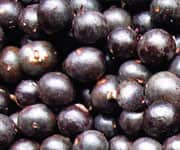
A standard index for determining the antioxidant value of various organic compounds is known as oxygen radical absorbance capacity, or ORAC.31 Of all fruits and vegetables—açaí berries have one of the highest reported total ORAC scores of any fruit or vegetable.32
In lab studies, açaí extracts inhibited proliferation of human colon cancer cells by up to 90.7%33 and proliferation of human leukemia cells by 56-86%.34
As a major cardiovascular protector, animal studies showed that Açaí induces long-lasting arterial wall relaxation (endothelium-dependent vasodilation),35 and reduces total and non-HDL cholesterol.36
With implications for treatment of neurological disorders such as Alzheimer’s disease and Parkinson’s disease, açaí-treated brain tissue showed decreased reactive oxygen species-induced damage to the lipids and proteins in the tissue, regardless of the area of the brain from which it was taken.37 And studies using freeze-dried açaí fruit pulp have shown it to have beneficial anti-inflammatory action—an important finding since inflammation underlies many chronic diseases of aging.38
In an uncontrolled 2011 pilot study, consumption of açaí fruit pulp reduced levels of selected markers of metabolic disease in ten overweight humans. In just one month, açaí reduced fasting glucose, insulin, and total cholesterol levels, and ameliorated the increase in plasma glucose following a standardized meal.39
What You Need to Know
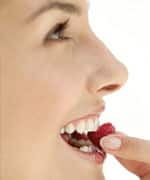 |
The Disease-Fighting Power of Anthocyanins
- A barrage of about 10,000 oxidative assaults befalls each of your body cells every day, accelerating aging and age-related diseases.
- The deep pigmentation of berries and some other foods indicates their rich content of powerful anthocyanins, which provide broad, disease-prevention activity.
- Anthocyanins and other compounds offer comprehensive antioxidant defense, as well as regulatory control of inflammation, enzymes, gene expression, and many other biochemical pathways.
- Extracts afford aging humans the concentrated polyphenols they need to optimally inhibit or even reverse free-radical aging.
Aronia
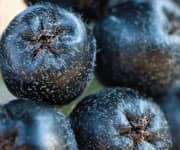
Also known as chokeberries, aronia berries have been found to yield very high ORAC values.32 Aronia has been shown to decrease lipid peroxidation,16 as well as oxidative stress.40 In vitro research found an anti-clotting effect.41 Drinking aronia berry juice reduced exercise-induced oxidative damage to red blood cells.42
In animals with experimentally induced high cholesterol, scientists observed that aronia exerted a significant cholesterol-lowering effect.43 Animal studies have demonstrated that aronia extracts have a protective effect on the liver,44 and, in diabetic rats, can help return the blood levels of both glucose and cholesterol to normal levels.45
Human intervention studies showed improvements in lipid profiles, glucose metabolism, and reduced LDL oxidation.16,40
In a host of studies, aronia compounds inhibited proliferation of human cervical tumor cells,46 killed malignant brain tumor cells,47 reduced biological markers of colon cancer,48 and helped prevent gastric ulcers.49
Bilberry
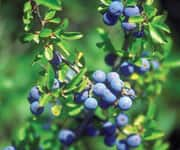
Bilberry, a relative of the blueberry, promotes frontline prevention against cardiovascular disease by significantly inhibiting angiotensin-converting enzyme (ACE), which contributes to hypertension by promoting narrowing of the arteries (vasoconstriction).50
Bilberries improve insulin sensitivity, which may help ward off diabetes.51 They also enhance short-term memory in animal models, suggesting the potential to help prevent Alzheimer’s disease.52
These berries inhibit proliferation of breast cancer cells and induce apoptosis in animal models,53 and bilberry extract defends against intestinal cancer.54-56
Extract of bilberry helps increase enzymes that inhibit oxidative stress in the eyes, suggesting it protects against age-related eye disorders, such as macular degeneration.57 In 2012, a study found that bilberries may prevent the early, gene-related changes that precede obesity- and diabetes-related visual impairment.58
Blackberry
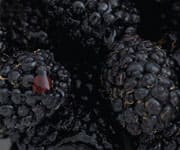
Extracts of blackberry show the potential, in lab studies, to inhibit the growth of human cancer cells of the colon, breast, and prostate.59,60
Compounds found in blackberries have been shown to be anti-inflammatory,61 antibacterial,62 and significantly antioxidative.31 They were found to be as effective as the drug metronidazole (Flagyl®) in treating a parasite and common cause of diarrhea known as Giardia duodenalis.27 And in 2012, scientists reported that blackberries appear to be a promising therapy for periodontal (gum) disease.63
They are particularly rich in an anthocyanin called cyanidin-3-O-beta-D-glucoside (C3G), which holds a higher ORAC value than many other tested anthocyanins.28 C3G has been shown to inhibit free radical damage induced by ultraviolet (UV),64 defend against oxidative effects in the liver,65 protect blood lipids against lipid peroxidation,66 and protect blood vessels.67 C3G plays an important role in protecting retinal tissue and retinal pigments from oxidative damage. It stimulates regeneration of the retinal pigment called rhodopsin.68 Rhodopsin is particularly vital to vision under dim light conditions. When rhodopsin levels are depleted, more time is needed for the remaining pigment to return to its normal, light-sensitive state. C3G increases the restoration of rhodopsin levels.69,70
Additionally, C3G protects retinal cells from harmful oxidation that is triggered by light and reduces the age-associated accumulation of a fluorescent pigment called A2E that interferes with normal function of the retina.71
Are Anthocyanin Extracts Superior to Whole Berries?
Researchers at Ohio State University treated rats with a carcinogenic compound and fed them a diet that was 5% made up of berries. Each of the seven test groups ate a different type of berry—açaí, blueberry, and so on.176
The scientists noted that there are—and this is crucial—significant, known differences among these berry types in terms of their levels of antioxidants such as anthocyanins and ellagitannins. Despite this, however, they found that all seven berry types proved “equally effective”—both in preventing tumor genesis and inhibiting tumor progression.176
This suggested that berries’ antioxidant content alone may not explain all of their beneficial effects.
A different study has enhanced our understanding of the superlative protection provided specifically by extracts of berries.177
In tests on mice that were fed high-fat diets, scientists found that purified anthocyanin extracts from strawberries and blueberries prevented obesity and abnormal blood-fat levels (dyslipidemia).
Yet consumption of powdered, whole berries did not!177
Berry extracts may provide potent benefits that even the whole berries themselves may not.
As you’ll learn, each different type of berry has been verified to provide protection against a unique set of diseases—and this has an important implication.
Optimum disease protection may require getting a full range of berry types each day—which is almost impossible without the use of supplemental extracts.
Blackcurrant

Studies demonstrate that blackcurrants relax the aorta by enhancing the synthesis of nitric oxide,72 improving the functioning of blood vessels,73 and reducing susceptibility of low-density lipoprotein (LDL) to oxidative stress, resulting in cardioprotective benefits.71 Blackcurrant anthocyanins improve blood flow in the human forearm and have been shown to reduce muscle fatigue and stiffness.74
One study found that black currant extract improved volunteers’ ability to adapt to darkness and decreased symptoms of tired eyes.75
A scientific review published in 2012 noted the therapeutic potential of blackcurrants against cardiovascular-associated illnesses, neurodegenerative and ocular diseases, kidney stones, and diabetic neuro-pathy.76
Blackcurrant has also been shown to stop the growth of certain harmful bacteria,62,77 provide potent anti-viral activity,78 and alleviate allergy-driven airway inflammation, a major cause of asthma.79 And in lab studies, mice given blackcurrant juice were shown to live longer.80
Blueberry

Abundant in polyphenols that can cross the blood-brain barrier, blueberries are well known for their enhancement of cognitive performance and their protection against age-related decline of memory and brain function.81-83
Blueberries have been shown not only to improve cognition in animal models of Alzheimer’s disease, but to decrease aggregation and enhance immune system breakdown removal of amyloid beta plaques in the brain.18 Blueberries help protect the aorta84,85 and the myocardium, and may prevent heart failure following myocardial infarction.86 They lower blood pressure and lipid peroxidation.87 They have also been found to improve insulin resistance and glucose control in pre-clinical models.87,88
In the laboratory, blueberry induced self-destruction among oral, breast, colon, and prostate cancer cells.60
Other beneficial effects of blueberries include activity against colitis (when taken with probiotics),89 liver injury,90 prevention of collagen breakdown in bone,91 inflammation,92 and neurodegeneration.92
Cherry
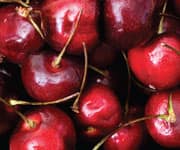
Both sweet and tart varieties of cherry have exhibited potent cardiovascular and antidiabetic effects.
Traditionally associated with the soothing of arthritis and gout, cherries have been found to block inflammatory pathways associated with these diseases;93-95 and a 2012 study found cherry intake reduced gout attacks by 35%.96 These berries and their extract also inhibit the inflammatory processes involved in heart disease.94,95,97
Rat studies using whole tart cherry powder suggest a protective role against both heart disease and diabetes, through an ability to reduce blood levels of triglycerides, cholesterol, glucose, and insulin, as well as the amount of cholesterol stored in the liver.98 Tart cherries have also been found effective in suppressing inflammation-induced pain.99
Cherries are rich in a phytonutrient—perillyl alcohol—shown to prevent development, or limit progression, of several cancer types.100-103And when anthocyanins and cyanidin supplements from cherries were fed to mice with a genetic susceptibility to colon cancer, they developed fewer tumors than those who did not receive the cherry-based supplement.104
Blue Corn

Anthocyanins and other exceptionally active antioxidants are not limited to berries.
Blue corn, also known as purple corn, is botanically identical to yellow corn but with one important difference. Its deep blue-purple color is the result of its rich anthocyanin content—with a concentration equal to, or greater than, the anthocyanin concentration of blueberries.105
Blue corn possesses anti-mutagenic effects, reducing expression of genes involved in the proliferation of tumor cells,106,107 as well as suppressing the development of colon cancer cells in rats.108
Scientists studied rats on a high-fat diet, and divided them into two groups. The test group’s diet was supplemented with purple corn pigment, and these subjects were found to be less likely to develop early signs of obesity and diabetes than the controls.15
Cranberry
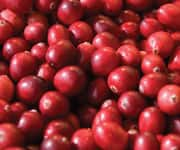
Cranberries provide powerful protection against oxidative damage—they were shown in an 8-week, double-blind, placebo-controlled trial involving 65 healthy women to significantly reduce blood levels of advanced oxidation protein products.109
But cranberries and cranberry juice are probably best known for their ability to help prevent urinary tract infections,110,111 and are believed to work by inhibiting the adherence of E. coli to the urethra and bladder wall, making it easier for the body to flush them out.112,113 Similarly, they may protect against gastric ulcers by preventing Helicobacter pylori, the bacterium implicated in this condition, from adhering to the stomach lining.114,115
Cranberries also display anti-proliferative activity in vitro and in vivo, against cancer cells of several different types: gastric,116 esophageal adenocarcinoma,117 breast,118 prostate,118 colon,118 and lung.118
Evidence indicates that cranberry compounds may protect cardiovascular health through various mechanisms, including modulation of blood pressure, inhibition of platelet aggregation, and reduction of inflammation.87,119
Elderberry
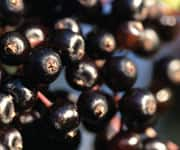
Elderberries have natural anti-viral activity. A standardized elderberry product was shown in placebo-controlled, double-blind, human studies to reduce the duration of illness from seasonal influenza to as little as 2-4 days.120,121 In lab studies, elderberry anthocyanins were also found to bind to H1N1 swine flu virus, blocking its ability to infect host cells—exhibiting certain activity comparable to that of oseltamivir (Tamiflu®).122 Elderberry has been shown in cell culture studies to be effective against at least10 different strains of influenza.120,121
Elderberry also delivers cardioprotective benefits by reducing lipid peroxides,123 neutralizing lipid peroxyl radicals,123 inhibiting LDL oxidation,123 and significantly protecting endothelial cells against oxidative stress.124 A remarkable recent study found elderberry extract reverses hyperlipidemia (high cholesterol) and lipid peroxidation.125
Grape
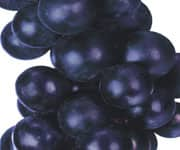
Grapes and grape seeds have been shown in the lab to block the proliferation of prostate, colon, leukemia, and other cancer cells.126-130 A 2012 study concluded that grape seed proanthocyanidins may be a promising cancer therapy for head and neck squamous cell carcinoma.131
Evidence indicates that the highly active compounds in grapes and grape seeds protect cardiovascular health by helping to prevent platelet aggregration,132 LDL oxidation,133 high blood cholesterol,134 reduce fatty streaks in the aorta,134 minimize inflammation,135 and prevent decreased blood flow to the brain.136
Grapes may help combat Parkinson’s, Alzheimer’s, and other neurodegenerative diseases.137,138 Polyphenol extracts from grape seeds have the ability to potently inhibit the production of neurofibrillary tangles, a primary marker for Alzheimer’s disease.137 In a model of Parkinson’s, whole grape extract was shown not only to preserve motor functions, but to extend the life span of fruit flies.138
Pomegranate
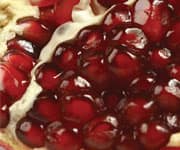
Extracts of pomegranate have shown promise in reducing the risk of metastasis in breast cancer.139 They initiate apoptosis (programmed cell death) and inhibit the proliferation of prostate, lung, colon, and other cancers.140-142 In both mice and humans with prostate cancer, consuming pomegranate slowed the rising levels of prostate-specific antigen (PSA), which is a marker of disease progression.143,144
Pomegranate juice has been shown in human studies to help protect cardiovascular health by significantly reducing both arterial plaque,145 lowering blood pressure,146 and improving blood lipid profiles.147 Pomegranate-derived compounds help reduce the adverse effects caused by metabolic syndrome.147
This fruit has been shown to reduce inflammation in colitis,148 enhance drug antibacterial activity,149 and suppress inflammation and joint damage in rheumatoid arthritis.150 There is even evidence that pomegranate supports the skin’s underlying structure and lowers the production of collagen-degrading enzymes, resulting in younger-looking skin.151
Prune
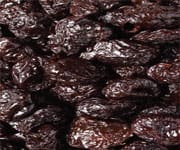
Nutritional and lifestyle factors can reduce the risk of osteoporosis. According to a 2011 review, the prune is the fruit that is the most effective at both preventing and reversing bone loss in part due to suppressing the rate of bone turnover.152
In rats, prune consumption produced changes in the bowel that suggest a protective effect against colon cancer.153 In obese rats, extract of plum also reduced blood levels of glucose and insulin, and increased insulin sensitivity, clearly suggesting they might be effective against type II diabetes.154
Prunes have also been shown to improve the body’s ability to absorb iron.155
Raspberry
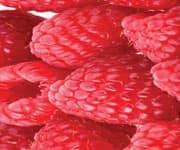
Raspberries are a rich source of ellagitannins, which are converted in the body to ellagic acid,156 a well-known antioxidant.157 Scientists recently established that ellagic acid—by suppressing oxidative stress and inflammation—may provide a useful dietary supplement to decrease the characteristic changes associated with metabolic syndrome, induced by a high-fat, high-carbohydrate diet.158
In vitro, raspberries protect against DNA damage159 in colon cancer cells, and inhibit colon cancer invasion.160 Raspberry and raspberry seed extracts have shown efficacy against oral, breast, cervical, and prostate cancers in the lab.60,161,162 Raspberries have been shown, in vitro, to stimulate apoptosis in human cancer cells20,60
Also, findings suggest that moderate consumption of raspberry juices helps prevent the development of atherosclerosis through improved antioxidant status and serum lipid profiles.163
Black Soybean Hull

Although not a fruit, black soybean hull is rich in anthocyanins, and notably, in C3G (cyanidin-3-O-beta-D-glucoside), as discussed in the section on blackberries.164
Substantial experimental findings reported that black soybean offers promise in fighting colon cancer165 and insulin resistance.166 It also promotes wound healing in skin cells and reduces inflammation in endothelial cells.167 And research showed that black soybean helps protect human LDL cholesterol against oxidation, which might inhibit processes that lead to atherosclerosis.168
Then, in 2012, scientists published a study reporting “potent health benefits of black soybean seed coat anthocyanins in neuroprotection,” mediated through the modulation of a number of genetic signaling pathways.169
Strawberry
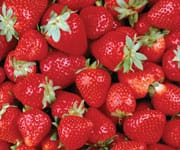
Strawberry extracts are impressive cancer fighters. They’ve been shown to inhibit the growth of oral, colon, prostate, liver, and breast cancers.60,170,171
A diet high in strawberries was found effective in protecting animals from age-related deficits in learning and memory.81 Researchers confirmed in 2012 that, although eating more berries may reduce cognitive decline in elderly humans, “flavonoid-rich blueberries and strawberries offer [the] most benefit.”83
In experimental studies, strawberries have also been found to deliver substantial cardiovascular benefits. They reduce the formation of unwanted blood clots, which may help prevent heart attack and stroke,172 lower total and LDL cholesterol,87 improve lipid peroxidation,173 and decrease biomarkers of atherosclerosis (malondialdehyde and adhesion molecules).87
Strawberries favorably affect postprandial inflammation and insulin sensitivity. In a compelling study, overweight humans were given either a strawberry drink or a placebo drink following a high carbohydrate, moderate fat meal. The strawberry group showed lower levels of biomarkers for inflammation and a reduction in postprandial insulin response.174
Summary
Every cell in the human body is hit by an estimated 10,000 individual strikes by free radicals each day—a factor in aging and degenerative disease onset.175
Scientific research suggests that berries and other dark-pigmented foods that are rich in anthocyanins provide frontline defense against multiple diseases of aging.
In addition to strong antioxidant protection, these plant compounds favorably regulate vital genes, signaling compounds, enzymes, metabolic factors, and other vital pathways.
Standardized extracts provide the concentrated anthocyanins—and other polyphenols—to ensure that your tissues derive their multiple benefits.
If you have any questions on the scientific content of this article, please call a Life Extension® Health Advisor at 1-866-864-3027.
References
- Zafra-Stone S, Yasmin T, Bagchi M, Chatterjee A, Vinson JA, Bagchi D. Berry anthocyanins as novel antioxidants in human health and disease prevention. Mol Nutr Food Res. 2007 Jun;51(6): 675-83.
- Wallace TC. Anthocyanins in cardiovascular disease. Adv Nutr. 2011 Jan;2(1):1-7.
- Wedick NM, Pan A, Cassidy A, et al. Dietary flavonoid intakes and risk of type 2 diabetes in US men and women. Am J Clin Nutr. 2012 Apr;95(4):925-33. doi: 10.3945/ajcn.111.028894. Epub 2012 Feb 22.
- Duthie SJ. Berry phytochemicals, genomic stability and cancer: evidence for chemoprotection at several stages in the carcinogenic process. Mol Nutr Food Res. 2007 Jun;51(6):665-74.
- Available at: http://www.ors.od.nih.gov/pes/dats/food/balance/documents/berries.pdf. Accessed December 12, 2012.
- Veberic R, Jakopic J, Stampar F, Schmitzer V. European elderberry (Sambucus nigra L.) rich in sugars, organic acids, anthocyanins and selected polyphenols. Food Chem. 2009;114:511-5.
- Koponen JM, Happonen AM, Mattila PH, Törrönen AR. Contents of anthocyanins and ellagitannins in selected foods consumed in Finland. J Agric Food Chem. 2007 Feb 21;55(4):1612-9. Epub 2007 Jan 30.
- Wu X, Beecher G, Holden JM, Haytowitz DB, Gebhardt SE, Prior RL. Concentrations of anthocyanins in common foods in the United States and estimation of normal consumption. J Agric Food Chem. 2006;54:4069-75.
- Ebadi M, Srinivasan SK, Baxi MD. Oxidative stress and antioxidant therapy in Parkinson’s disease. Prog Neurobiol. 1996;48:1-19.
- Markesbery WR, Carney JM. Oxidative alterations in Alzheimer’s disease. Brain Pathol. 1999;9:133-46.
- Olanow CW, Arendash GW. Metals and free radicals in neurode-generation. Curr Opin Neurol. 1994;7:548-58.
- Simonian NA, Coyle JT. Oxidative stress in neurodegenerative diseases. Annu Rev Pharmacol Toxicol. 1996;36:83-106.
- Kovacic P, Jacintho JD. Mechanisms of carcinogenesis: focus on oxidative stress and electron transfer. Curr Med Chem. 2001; 8:773-96.
- Bowler RP, Crapo JD. Oxidative stress in allergic respiratory diseases. J Allergy Clin Immunol. 2002;110:349-56.
- Tsuda T, Horio F, Uchida K, Aoki H, Osawa T. Dietary cyanidin 3-O-beta-D-glucoside-rich purple corn color prevents obesity and ameliorates hyperglycemia in mice. J Nutr. 2003 Jul;133(7): 2125-30.
- Basu A, Rhone M, Lyons TJ. Berries: emerging impact on cardiovascular health. Nutr Rev. 2010 Mar;68(3):168-77.
- Sasaki R, Nishimura N, Hoshino H,e t al. Cyanidin 3-glucoside ameliorates hyperglycemia and insulin sensitivity due to downregulation of retinol binding protein 4 expression in diabetic mice. Biochem Pharamacol. 2007 Dec 3;74(11):1619-27. Epub 2007 Aug 10.
- Zhu Y, Bickford PC, Sanberg P, Giunta B, Tan J. Blueberry opposes beta-amyloid peptide-induced microglial activation via inhibition of p44/42 mitogen-activation protein kinase. Rejuvenation Res. 2008 Oct;11(5):891-901. doi: 10.1089/rej.2008.0757.
- Basu A, Wilkinson M, Penugonda K, Simmons B, Betts NM, Lyons TJ. Freeze-dried strawberry powder improves lipid profile and lipid peroxidation in women with metabolic syndrome: baseline and post intervention effects. Nutr J. 2009 Sept;8:43.
- Zikri NN, Riedl KM, Wang LS, Lechner J, Schwartz SJ, Stoner GD. Black raspberry components inhibit proliferation, induce apoptosis, and modulate gene expression in rat esophageal epithelial cells. Nutr Cancer. 2009 Nov;61(6):816-26.
- Shin DY, Lee WS, Lu JN, et al. Induction of apoptosis in human colon cancer HCT-116 cells by anthocyanins through suppression of Akt and activation of p38-MAPK. Int J Oncol. 2009 Dec;35(6):1499-504.
- Shin DY, Ryu CH, Lee WS, et al. Induction of apoptosis and inhibition of invasion in human hepatoma cells by anthocyanins from meoru. Ann N Y Acad Sci. 2009 Aug;1171:137-48.
- Li L, Adams LS, Chen S, Killian C, Ahmed A, Seeram NP. Eugenia jambolana Lam. berry extract inhibits growth and induces apoptosis of human breast cancer but not non-tumorigenic breast cells. J Agric Food Chem. 2009 Feb 11;57(3):826-31.
- Lee SH, Jeong HJ, Kim DW, et al. Enhancement of HIV-1 Tat fusion protein transduction efficiency by bog blueberry anthocyanins. BMB Rep. 2010 Aug;43(8):561-6.
- Akiyama H, Fujii K, Yamasaki O, Oono T, Iwatsuki K. Antibacterial action of several tannins against Staphylococcus aureus. J Antimicrob Chemother. 2001 Oct;48(4):487–91.
- Kolodziej H, Kiderlen AF. Antileishmanial activity and immune modulatory effects of tannins and related compounds on Leishmania parasitised RAW 264.7 cells. Phytochemistry. 2005 Sept;66(17):2056–71.
- Anthony JP, Fyfe L, Stewart D, McDougall GJ. Differential effectiveness of berry polyphenols as anti-giardial agents. Parasitology. 2011 Aug;138(9):1110-6.
- Acquaviva R, Russo A, Galvano F, et al. Cyanidin and cyanidin 3-O-beta-D-glucoside as DNA cleavage protectors and antioxidants. Cell Biol Toxicol. 2003;19:243-52.
- Shukitt-Hale B, Lau FC, Joseph JA. Berry fruit supplementation and the aging brain. J Agric Food Chem. 2008. Feb 13;56(3): 636-41.
- Seeram NP. Berry fruits for cancer prevention: current status and future prospects. J. Agric. Food Chem. 2008;56(3):630-5.
- Prior RL, Wu X, Schaich K. Standardized methods for the determination of antioxidant capacity and phenolics in foods and dietary supplements. J Agric Food Chem. 2005 May 18;53(10): 4290-302.
- Available at: http://www.oracvalues.com/. Accessed December 4, 2012.
- Pacheco-Palencia LA, Talcott ST, Safe S, Mertens-Talcott S. Absorption and biological activity of phytochemical-rich extracts from açai (Euterpe oleracea Mart.) pulp and oil in vitro. J Agric Food Chem. 2008 May 28;56(10):3593-600.
- Del Pozo-Insfran D, Percival SS, Talcott ST. Açai (Euterpe oleracea Mart.) polyphenolics in their glycoside and aglycone forms induce apoptosis of HL-60 leukemia cells. J Agric Food Chem. 2006 Feb 22;54(4):1222-9.
- Rocha APM, Carvalho LC, Sousa SV, et al. Endothelium-dependent vasodilator effect of Euterpe oleracea Mart. (Açai) extracts in mesenteric vascular bed of the rat. Vasc Pharmacology. 2007 Feb;46(2):97-104.
- de Souza MO, Silva M, Silva ME, Oliveira RdeP, Pedrosa ML. Diet supplementation with açai (Euterpe oleracea Mart.) pulp improves biomarkers of oxidative stress and the serum lipid profile in rats. Nutrition. 2010 Jul-Aug;26(7-8):804-10.
- Spada PD, Dani C, Bortolini GV, Funchai C, Henriques JA, Salvador M. Frozen fruit pulp of Euterpe oleraceae Mart. (Açai) prevents hydrogen peroxide-induced damage in the cerebral cortex, cerebellum, and hippocampus of rats. J Med Food. 2009 Oct;12(5):1084-8.
- Schauss AG, Wu X, Prior RL, et al. Antioxidant capacity and other bioactivities of the freeze-dried Amazonian palm berry, Euterpe oleraceae mart. (acai). J Agric Food Chem. 2006 Nov 1;54(22):8604-10.
- Udani JK, Singh BB, Singh VJ, Barrett ML. Effects of Açai (Euterpe oleracea Mart.) berry preparation on metabolic parameters in a healthy overweight population: a pilot study. Nutr J. 2011 May 12;10:45.
- Kowalczyk E, Kopff A, Niedworok J, Kopff M, Jankowski A. Anthocyanins-an adjunct to cardiovascular therapy? Kardiol Pol. 2002 Oct;57(10):332-6.
- Bijak M, Saluk J, Ponczek MB, Nowak P. Antithrombin effect of polyphenol-rich extracts from black chokeberry and grape seeds. Phytother Res. Epub 2012 Apr 4.
- Pilaczynska-Szczesniak L, Skarpanska-Steinborn A, Deskur E, Basta P, Horoszkiewicz-Hassan M. The influence of chokeberry juice supplementation on the reduction of oxidative stress resulting from an incremental rowing ergometer exercise. Int J Sport Nutr Exerc Metab. 2005 Feb 15;15(1):48-58.
- Valcheva-Kuzmanova S, Kuzmanov K, Mihova V, Krasnaliev I, Borisova P, Belcheva A. Antihyperlipidemic effect of Aronia melanocarpa fruit juice in rats fed a high-cholesterol diet. Plant Foods Hum Nutr. 2007 Mar;62(1):19-24.
- Valcheva-Kuzmanova SV, Popova PB, Galunska BT, Belcheva A. Protective effect of Aronia melanocarpa fruit juice pretreatment in a model of carbon tetrachloride-induced hepatotoxicity in rats. Folia Med (Plovdiv). 2006;48(2):57-62.
- Valcheva-Kuzmanova S, Kuzmanov K, Tancheva S, Belcheva A. Hypoglycemic and hypolipidemic effects of Aronia melanocarpa fruit juice in streptozotocin-induced diabetic rats. Methods Find Exp Clin Pharmacol. 2007 Mar;29(2):101-5.
- Rugină D, Sconţa Z, Leopold L, Pintea A, Bunea A, Socaciu C. Antioxidant activities of chokeberry extracts and the cytotoxic action of their anthocyanin fraction on HeLa human cervical tumor cells. J Med Food. 2012 Aug;15(8):700-6.
- Abdullah Thani NA, Sallis B, Nuttall R, et al. Induction of apoptosis and reduction of MMP gene expression in the U373 cell line by polyphenolics in Aronia melanocarpa and by curcumin. Oncol Rep. 2012 Oct;28(4):1435-42.
- Lala G, Malik M, Zhao C, et al. Anthocyanin-rich extracts inhibit multiple biomarkers of colon cancer in rats. Nutr Cancer. 2006;54(1):84-93.
- Valcheva-Kuzmanova S, Marazova K, Krasnaliev I, et al. Effect of Aronia melanocarpa fruit juice on indomethacin-induced gastric mucosal damage and oxidative stress in rats. Exp Toxicol Pathol. 2005 Apr;56(6):385-92.
- Persson IA, Persson K, Andersson RG. Effect of Vaccinum myrtillus and its polyphenols on angiotensin-converting enzyme activity in human endothelial cells. J Agric Food Chem. 2009 Jun 10;57(11):4626-9.
- Takikawa M, Inoue S, Horio F, Tsuda T. Dietary anthocyanin-rich bilberry extract ameliorates hyperglycemia and insulin sensitivity via activation of AMP-activated protein kinase in diabetic mice. J Nutr. 2010 Mar;140(3):527-33.
- Ramirez MR, Izquierdo I, do Carmo Bassols Raseira M, Zuanazzi JA, Barros D, Henriques AT. Effect of lyophilized Vaccinum berries on memory, anxiety, and locomotion in adult rats. Pharmacol Res. 2005 Dec;52(6):457-62.
- Nguyen V, Tang J, Oroudjev E, et al. Cytotoxic effects of bilberry extract on MCF7-GFP-tubulin breast cancer cells. J Med Food. 2010 Feb 4.
- Thomasset S, Berry DP, Cai H, et al. Pilot study of oral anthocyanins for colorectal cancer chemoprevention. Cancer Prev Res (Phila). 2009 Jul;2(7):625-33.
- Zhao C, Giusti MM, Malik M, Moyer MP, Magnuson BA. Effects of commercial anthocyanin-rich extracts on colonic cancer and nontumorigenic colonic cell growth. J Agric Food Chem. 2004 Oct 6;52(20):6122-8.
- Misikangas M, Pajari AM, Paivarinta E, et al. Three Nordic berries inhibit intestinal tumorigenesis in multiple intestinal neoplasia/+ mice by modulating beta-catenin signaling in the tumor and transcription in the mucosa. J Nutr. 2007 Oct;137(10):2285-90.
- Milbury PE, Graf B, Curran-Celentano JM, Blumberg JB. Bilberry (Vaccinium myrtillus) anthocyanins modulate heme oxygenase-1 and glutathione S-transferase-pi expression in ARPE-19 cells. Invest Ophthalmol Vis Sci. 2007 May;48(5):2343-9.
- Mykkänen OT, Kalesnykas G, Adriaens M, Evelo CT, Törrönen R, Kaarniranta K. Bilberries potentially alleviate stress-related retinal gene expression induced by a high-fat diet in mice. Mol Vis. 2012;18:2338-51.
- Dai J, Patel JD, Mumper RJ. Characterization of blackberry extract and its antiproliferative and anti-inflammatory properties. J Med Food. 2007;10:258-65.
- Seeram NP, Adams LS, Zhang Y, et al. Blackberry, black raspberry, blueberry, cranberry, red raspberry, and strawberry extracts inhibit growth and stimulate apoptosis of human cancer cells in vitro. J Agric Food Chem. 2006 Dec 13;54(25):9329-39.
- Tsuda T, Horio F, Osawa T. Cyanidin 3-O-beta-D-glucoside suppresses nitric oxide production during a zymosan treatment in rats. J Nutr Sci Vitaminol (Tokyo). 2002 Aug;48(4):305-10.
- Cavanagh HM, Hipwell M, Wilkinson JM. Antibacterial activity of berry fruits used for culinary purposes. J Med Food. 2003;6(1):57-61.
- González OA, Escamilla C, Danaher RJ, et al. Antibacterial effects of blackberry extract target periodontopathogens. J Periodontal Res. E pub 2012 Jul 19.
- Tsuda T, Shiga K, Ohshima K, Kawakishi S, Osawa T. Inhibition of lipid peroxidation and the active oxygen radical scavenging effect of anthocyanin pigments isolated from Phaseolus vulgaris L. Biochem Pharmacol. 1996 Oct 11;52(7):1033-9.
- Tsuda T, Horio F, Kato Y, Osawa T. Cyanidin 3-O-beta-D-glucoside attenuates the hepatic ischemia-reperfusion injury through a decrease in the neutrophil chemoattractant production in rats. J Nutr Sci Vitaminol (Tokyo). 2002 Apr;48(2):134-41.
- Tsuda T, Horio F, Osawa T. Dietary cyanidin 3-O-beta-D-glucoside increases ex vivo oxidation resistance of serum in rats. Lipids. 1998 Jun;33(6):583-8.
- Serraino I, Dugo L, Dugo P, et al. Protective effects of cyanidin-3-O-glucoside from blackberry extract against peroxynitrite-induced endothelial dysfunction and vascular failure. Life Sci. 2003 Jul 18;73(9):1097-114.
- Matsumoto H, Nakamura Y, Tachibanaki S, Kawamura S, Hirayama M. Stimulatory effect of cyanidin 3-glycosides on the regeneration of rhodopsin. J Agric Food Chem. 2003 Jun 4;51(12):3560-3.
- Tirupula KC, Balem F, Yanamala N, Klein-Seetharaman J. pH-dependent interaction of rhodopsin with cyanidin-3-glucoside. 2. Functional aspects. Photochem Photobiol. 2009 Mar-Apr;85(2):463-70.
- Yanamala N, Tirupula KC, Balem F, Klein-Seetharaman J. pH-dependent interaction of rhodopsin with cyanidin-3-glucoside. 1. Structural aspects. Photochem Photobiol. 2009 Mar-Apr;85(2):454-62.
- Jang YP, Zhou J, Nakanishi K, Sparrow JR. Anthocyanins protect against A2E photooxidation and membrane permeabilization in retinal pigment epithelial cells. Photochem Photobiol. 2005 May-Jun;81(3):529-36.
- Nakamura Y, Matsumoto H, Todoki K. Endothelium-dependent vasorelaxation induced by black currant concentrate in rat thoracic aorta. Jpn J Pharmacol. 2002 May;89(1):29-35.
- Marniemi J, Hakala P, Maki J, Ahotupa M. Partial resistance of low density lipoprotein to oxidation in vivo after increased intake of berries. Nutr Metab Cardiovasc Dis. 2000 Dec;10(6):331-7.
- Matsumoto H, Takenami E, Iwasaki-Kurashige K, et al. Effects of blackcurrant anthocyanin intake on peripheral muscle circulation during typing work in humans. Eur J Appl Physiol. 2005 May;94(1-2):36-45.
- Nakaishi H, Matsumoto H, Tominaga S, Hirayama M. Effects of black current anthocyanoside intake on dark adaptation and VDT work-induced transient refractive alteration in healthy humans. Altern Med Rev. 2000 Dec;5(6):553-62.
- Gopalan A, Reuben SC, Ahmed S, Darvesh AS, Hohmann J, Bishayee A. The health benefits of blackcurrants. Food Funct. 2012 Aug;3(8):795-809.
- Puupponen-Pimia R, Nohynek L, Meier C, et al. Antimicrobial properties of phenolic compounds from berries. J Appl Microbiol. 2001 Apr;90(4):494-507.
- Knox YM, Hayashi K, Suzutani T, et al. Activity of anthocyanins from fruit extract of Ribes nigrum L. against influenza A and B viruses. Acta Virol. 2001;45(4):209-15.
- Hurst SM, McGhie TK, Cooney JM, et al. Blackcurrant proanthocyanidins augment IFN-gamma-induced suppression of IL-4 stimulated CCL26 secretion in alveolar epithelial cells. Mol Nutr Food Res. 2010 Jul;54 Suppl 2:S159-70.
- Jones E, Hughes RE. Quercetin, flavonoids and the life-span of mice. Exp Gerontol. 1982;17(3):213-7.
- Shukitt-Hale B, Carey AN, Jenkins D, Rabin BM, Joseph JA. Beneficial effects of fruit extracts on neuronal function and behavior in a rodent model of accelerated aging. Neurobiol Aging. 2007 Aug;28(8):1187-94.
- Devore EE, Kang JH, Breteler MM, Grodstein F. Dietary intakes of berries and flavonoids in relation to cognitive decline. Ann Neurol. 2012 Jul;72(1):135-43.
- Eating more berries may reduce cognitive decline in the elderly: flavonoid-rich blueberries and strawberries offer most benefit. Am J Alzheimers Dis Other Demen. 2012 Aug;27(5):358.
- Kalea AZ, Lamari FN, Theocharis AD, et al. Wild blueberry (Vaccinium angustifolium) consumption affects the composition and structure of glycosaminoglycans in Sprague-Dawley rat aorta. J Nutr Biochem. 2006 Feb;17(2):109-16.
- Norton C, Kalea AZ, Harris PD, Klimis-Zacas DJ. Wild blueberry-rich diets affect the contractile machinery of the vascular smooth muscle in the Sprague-Dawley rat. J Med Food. 2005;8(1):8-13.
- Ahmet I, Spangler E, Shukitt-Hale B, et al. Blueberry-enriched diet protects rat heart from ischemic damage. PLoS One. 2009 Jun 19;4(6).
- Basu A, Lyons TJ. Strawberries, blueberries, and cranberries in the Metabolic Syndrome: Clinical Perspectives. J Agric Food Chem. Epub 2011 Nov 29.
- DeFuria J, Bennett G, Strissel KJ, et al. Dietary blueberry attenuates whole-body insulin resistance in high fat mice by reducing adipocyte death and its inflammatory sequelae. J Nutr. 2009 Aug;139(8):1510-6.
- Osman N, Adawi D, Ahrne S, Jeppsson B, Molin G. Probiotics and blueberry attenuate the severity of dextran sulfate sodium (DSS)-induced colitis. Dig Dis Sci. 2008 Sep;53(9):2464-74.
- Lu S, Cheng ML, Li H, Wu J, Wang YP. Effects of blueberry on hepatic fibrosis and ultrastructural of hepatocytes in rats. Zhonghua Yi Xue Za Zhi. 2012 Apr 3;92(13):927-31.
- Zhang J, Lazarenko OP, Blackburn ML, Badger TM, Ronis MJ, Chen JR. Blueberry consumption prevents loss of collagen in bone matrix and inhibits senescence pathways in osteoblastic cells. Age (Dordr). 2012 May 4. [Epub ahead of print]
- Heim KC, Angers P, Léonhart S, Ritz BW. Anti-inflammatory and neuroactive properties of selected fruit extracts. J Med Food. 2012 Sep;15(9):851-4.
- Jacob RA, Spinozzi GM, Simon VA, et al. Consumption of cherries lowers plasma urate in healthy women. J Nutr. 2003 Jun;133(6):1826-9.
- Kelley DS, Rasooly R, Jacob RA, Kader AA, Mackey BE. Consumption of Bing sweet cherries lowers circulating concentrations of inflammation markers in healthy men and women. J Nutr. 2006 Apr;136(4):981-6.
- van Acker SA, Tromp MN, Haenen GR, van d, V, Bast A. Flavonoids as scavengers of nitric oxide radical. Biochem Biophys Res Commun. 1995 Sep 25;214(3):755-9.
- Zhang Y, Neogi T, Chen C, Chaisson C, Hunter D, Choi HK. Cherry consumption and the risk of recurrent gout attacks. Arthritis Rheum. Epub 2012 Sep 28.
- Ridker PM, Hennekens CH, Buring JE, Rifai N. C-reactive protein and other markers of inflammation in the prediction of cardiovascular disease in women. N Engl J Med. 2000 Mar 23;342(12):836-43.
- Available at: http://www.sciencedaily.com/releases/2007/04/070430074703.htm. Accessed October 2, 2012.
- Tall JM, Seeream NP, Zhao C, Nair MG, Meyer RA, Raja SN. Tart cherry anthocyanins suppress inflammation-induced pain behavior in rat. Behav Brain Res. 2004 Aug 12;153(1);181-8.
- Clark SS. Perillyl alcohol induces c-Myc-dependent apoptosis in Bcr/Abl-transformed leukemia cells. Oncology. 2006;70(1):13-8.
- Yuri T, Danbara N, Tsujita-Kyutoku M, et al. Perillyl alcohol inhibits human breast cancer cell growth in vitro and in vivo. Breast Cancer Res Treat. 2004 Apr;84(3):251-60.
- Chung BH, Lee HY, Lee JS, Young CY. Perillyl alcohol inhibits the expression and function of the androgen receptor in human prostate cancer cells. Cancer Lett. 2006 May 18;236(2):222-8.
- Xu M, Floyd HS, Greth SM, et al. Perillyl alcohol-mediated inhibition of lung cancer cell line proliferation: potential mechanisms for its chemotherapeutic effects. Toxicol Appl Pharmacol. 2004 Mar 1;195(2):232-46.
- Kang SY, Seeram NP, Nair MG, Bourquin LD. Tart cherry anthocyanins inhibit tumor development in Apc(Min) mice and reduce proliferation of human colon cancer cells. Cancer Lett. 2003 May 8;194(1):13-9.
- Cevallos-Casals BA, Cisneros-Zevallos L. Stoichiometric and kinetic studies of phenolic antioxidants from Andean purple corn and red-fleshed sweet potato. J Agric Food Chem. 2003 May 21;51(11):3313-9.
- Pedreschi R, Cisneros-Zevallos L. Antimutagenic and antioxidant properties of phenolic fractions from Andean purple corn (Zea mays L.). J Agric Food Chem. 2006 Jun 28;54(13):4557-67.
- Fukamachi K, Imada T, Ohshima Y, Xu J, Tsuda H. Purple corn color suppresses Ras protein level and inhibits 7,12 dimethylbenz(a)anthracine-induced mammary and carcinogenesis in the rat. J Agric Food Chem. 2008 Sep;99(9):1841-6.
- Hagiwara A, Miyashita K, Nakanishi T et al. Pronounced inhibition by a natural anthocyanin, purple corn color, of 2-amino-1-methyl-6-phenylimidazo[4,5-b]pyridine (PhIP)-associated colorectal carcinogenesis in male F344 rats pretreated with 1,2-dimethylhydrazine. Cancer Lett. 2001 Sep 28;171(1):17-25.
- Valentova K, Stejskal D, Bednar P, et al. Biosafety, antioxidant status and metabolites in urine after consumption of dried cranberry juice in healthy women: a pilot double-blind placebo-controlled trial. J Agric Food Chem. 2007 Apr 18;55:3217-24.
- Jepson RG, Craig JC. A systematic review of the evidence for cranberries and blueberries in UTI prevention. Mol Nutr Food Res. 2007 Jun;51(6):738-45.
- Takahashi S, Hamasuna R, Yasuda M, et al. A randomized clinical trial to evaluate the preventive effect of cranberry juice (UR65) for patients with recurrent urinary tract infection. J Infect Chemother. Epub 2012 Sep 8.
- Gupta K, Chou MY, Howell A, Wobbe C, Grady R, Stapleton AE. Cranberry products inhibit adherence of p-fimbriated Escherichia coli to primary cultured bladder and vaginal epithelial cells. J Urol. 2007 Jun;177(6):2357-60.
- Liu Y, Gallardo-Moreno AM, Pinzon-Arango PA, Reynolds Y, Rodriguez G, Camesano TA. Cranberry changes the physicochemical surface properties of E. coli and adhesion with uroepithelial cells. Colloids Surf B Biointerfaces. 2008 Aug 1;65(1):35-42.
- Zhang L, Ma J, Pan K, Go VL, Chen J, You WC. Efficacy of cranberry juice on Helicobacter pylori infection: a double-blind, randomized placebo-controlled trial. Helicobacter. 2005 Apr;10(2):139-45.
- Burger O, Weiss E, Sharon N, Tabak M, Neeman I, Ofek I. Inhibition of Helicobacter pylori adhesion to human gastric mucus by a high-molecular-weight constituent of cranberry juice. Crit Rev Food Sci Nutr. 2002;42(3 Suppl):279-84.
- Liu M, Lin LQ, Song BB, et al. Cranberry phytochemical extract inhibits SGC-7901 cell growth and human tumor xenografts in Balb/c nu/nu mice. J Agric Food Chem. 2009 Jan 28;57(2):762-8.
- Kresty LA, Howell AB, Baird M. Cranberry proanthocyanidins induce apoptosis and inhibit acid-induced proliferation of human esophageal adenocarcinoma cells. J Agric Food Chem. 2008 Feb 13;56(3):676-80.
- Neto CC. Cranberry and its phytochemicals: a review of in vitro anticancer studies. J Nutr. 2007 Jan;137(1 Suppl):186S-93S.
- McKay DL, Blumberg JB. Cranberries (Vaccinium macrocarpon) and cardiovascular disease risk factors. Nutr Rev. 2007 Nov;65(11):490-502.
- Barak V, Halperin T, Kalickman I. The effect of Sambucol, a black elderberry-based, natural product, on the production of human cytokines: I. Inflammatory cytokines. Eur Cytokine Netw. 2001 Apr-Jun;12(2):290-6.
- Zakay-Rones Z, Varsano N, Zlotnik M, et al. Inhibition of several strains of influenza virus in vitro and reduction of symptoms by an elderberry extract (Sambucus nigra L.) during an outbreak of influenza B Panama. J Altern Complement Med. 1995;1(4):361-9.
- Roschek B Jr, Fink RC, McMichael MD, Li D, Alberte RS. Elderberry flavonoids bind to and prevent H1N1 infection in vitro. Phytochemistry. 2009 Jul;70(10):1255-61.
- Ciocoiu M, Miron A, Mares L, et al. The effects of Sambucus nigra polyphenols on oxidative stress and metabolic disorders in experiemental diabetes mellitus. J Physiol Biochem. 2009 Sep;65(3):297-304.
- Youdim KA, Martin A, Joseph JA. Incorporation of the elderberry anthocyanins by endothelial cells increases protection against oxidative stress. Free Radic Biol Med. 2000 Jul 1;29(1):51-60.
- Dubey P, Jayasooriya AP, Cheema SK. Fish oil induced hyperlipidemia and oxidative stress in BioF1B hamsters is attenuated by elderberry extract. Appl Physiol Nutr Metab. 2012 Jun;37(3):472-9.
- Stewart JR, Artime MC, O’Brian CA. Resveratrol: a candidate nutritional substance for prostate cancer prevention. J Nutr. 2003 Jul;133(7 Suppl):2440S-3S.
- Ruano-Ravina A, Figueiras A, Barros-Dios JM. Type of wine and risk of lung cancer: a case-control study in Spain. Thorax. 2004 Nov;59(11):981-5.
- Hu H, Qin YM. Grape seed proanthocyanidin extract induced mitochondria-associated apoptosis in human acute myeloid leukaemia 14.3D10 cells. Chin Med J (Engl.). 2006 Mar 5;119(5):417-21.
- Yun JW, Lee WS, Kim MJ, et al. Characterization of a profile of the anthocyanins isolated from Vitis coignetiae Pulliat and their anti-invasive activity on HT-29 human colon cancer cells. Food Chem Toxicol. 2010 Mar;48(3):903-9.
- Huang S, Yang N, Liu Y, et al. Grape seed proanthocyanidins inhibit colon cancer-induced angiogenesis through suppressing the expression of VEGF and Ang1. Int J Mol Med. Epub 2012 Oct 1.
- Prasad R, Katiyar SK. Bioactive phytochemical proanthocyanidins inhibit growth of head and neck squamous cell carcinoma cells by targeting multiple signaling molecules. PLoS One. 2012;7(9):e46404.
- Freedman JE, Parker C, III, Li L, et al. Select flavonoids and whole juice from purple grapes inhibit platelet function and enhance nitric oxide release. Circulation. 2001 Jun 12;103(23):2792-8.
- Miyagi Y, Miwa K, Inoue H. Inhibition of human low-density lipoprotein oxidation by flavonoids in red wine and grape juice. Am J Cardiol. 1997 Dec 15;80(12):1627-31.
- Pan CH, Tsai CH, Lin WH, Chen GY, Wu CH. Ethanolic extract of Vitis thunbergii exhibits lipid lowering properties via modulation of the AMPK-ACC pathway in hypercholesterolemic rabbits. Evid Based Complement Alternat Med. 2012;2012:436786. Epub 2012 Mar 28.
- Szewczuk LM and Penning TM. Mechanism-based inactivation of COX-1 by red wine m-hydroquinones: a structure-activity relationship study. J Nat Prod. 2004 Nov;67(11):1777-82.
- Lu KT, Chiou RY, Chen LG, et al. Neuroprotective effects of resveratrol on cerebral ischemia-induced neuron loss mediated by free radical scavenging and cerebral blood flow elevation. J Agric Food Chem. 2006 Apr 19;54(8):3126-31.
- Wang J, Santa-Maria I, Ho L, et al. Grape derived polyphenols attenuate tau neuropathology in a mouse model of Alzheimer’s disease. J Alzheimers Dis. 2010;22(2):653-61. doi: 10.3233/JAD-2010-101074.
- Long J, Gao H, Sun L, Liu J, Zhao-Wilson X. Grape extract protects mitochondria from oxidative damage and improves locomotor dysfunction and extends lifespan in a Drosophila Parkinson’s disease model. Rejuvenation Res. 2009 Oct;12(5):321-31.
- Rocha A, Wang L, Penichet M, Martins-Green M. Pomegranate juice and specific components inhibit cell and molecular processes critical for metastasis of breast cancer. Breast Cancer Res Treat. 2012 Dec;136(3):647-58. doi: 10.1007/s10549-012-2264-5. Epub 2012 Oct 12.
- Koyoma S, Cobb LJ, Mehta HH et al. Pomegranate extract induces apoptosis in human prostate cancer cells by modulation of the IGF-IGFBP axis. Growth Horm IGF Res. 2010;20:55-62.
- Khan SA. The role of pomegranate (Punica granatum L.) in colon cancer. Pak J Pharm Sci. 2009;22:346-8.
- Adhami VM, Khan N, Mukhtar H. Cancer chemoprevention by pomegranate: laboratory and clinical evidence. Nutr Cancer. 2009;61(6):811-5.
- Malik A, Afaq F, Sarfaraz S et al. Pomegranate fruit juice for chemoprevention and chemotherapy of prostate cancer. Proc Natl Acad Sci USA. 2005 Oct 11;102(41):14813-8.
- Pantuck AJ, Leppert JT, Zomorodian N, et al. Phase II study of pomegranate juice for men with rising prostate-specific antigen following surgery or radiation for prostate cancer. Clin Cancer Res. 2006 Jul 1;12(13):4018-26
- Aviram M, Rosenblat M, Gaitini D, et al. Pomegranate juice consumption for 3 years by patients with carotid artery stenosis reduces common carotid intima-media thickness, blood pressure and LDL oxidation. Clin Nutr. 2004 Jun;23(3):423-33.
- Aviram M, Dornfeld L. Pomegranate juice consumption inhibits serum angiotensin converting enzyme activity and reduces systolic blood pressure. Atherosclerosis. 2001 Sep;158(1):195-8.
- Medjakovic S, Jungbauer A. Pomegranate: a fruit that ameliorates metabolic syndrome. Food Funct. Epub 2012 Oct 12.
- Larrosa M, Gonzalez-Sarrias A, Yanez-Gascon MJ, et al. Anti-inflammatory properties of a pomegranate extract and its metabolite urolithin-A in a colitis rat model and the effect of colon inflammation on phenolic metabolism. J Nutr Biochem. 2009 Jul 17.
- Dey D, Debnath S, Hazra S, Ghosh S, Ray R, Hazra B. Pomegranate pericarp extract enhances the antibacterial activity of ciprofloxacin against extended-spectrum β-lactamase (ESBL) and metallo-β-lactamase (MBL) producing Gram-negative bacilli. Food Chem Toxicol. 2012 Sep 11;50(12):4302-9.
- Shukla M, Gupta K, Rasheed Z, Khan KA, Haqqi TM. Consumption of hydrolysable tannins-rich pomegranate extract suppresses inflammation and joint damage in rheumatoid arthritis. Nutrition. 2008 Jul-Aug;24(7-8):733-43.
- Aslam MN, Lansky EP, Varani J. Pomegranate as a cosmeceutical source: pomegranate fractions promote proliferation and procollagen synthesis and inhibit matrix metalloproteinase-1 production in human skin cells. J Ethnopharmacol. 2006 Feb 20;103(3):311-8.
- Hooshmand S, Chai SC, Saadat RL, Payton ME, Brummel-Smith K, Arjmandi BH. Comparative effects of dried plum and dried apple on bone in postmenopausal women. Br J Nutr. 2011 Sep;106(6):923-30.
- Yang Y, Gallaher DD. Effect of dried plums on colon cancer risk factors in rats. Nutr Cancer. 2005;53(1):117-25.
- Utsunomiya H, Yamakawa T, Kamei J, Kadonosono K, Tanaka S. Anti-hyperglycemic effects of plum in a rat model of obesity and type 2 diabetes, Wistar fatty rat. Biomed Res. 2005 Oct;26(5):193-200.
- Ballot D, Baynes RD, Bothwell TH, et al. The effects of fruit juices and fruits on the absorption of iron from a rice meal. Br J Nutr. 1987 May;57(3):331-43.
- González-Barrio R, Edwards CA, Crozier A. Colonic catabolism of ellagitannins, ellagic acid, and raspberry anthocyanins: in vivo and in vitro studies. Drug Metab Dispos. 2011 Sep;39(9):1680-8. Epub 2011 May 27.
- Kähkönen M, Kylli P, Ollilainen V, Salminen JP, Heinonen M. Antioxidant activity of isolated ellagitannins from red raspberries and cloudberries. J Agric Food Chem. 2012 Feb 8;60(5):1167-74.
- Panchal SK, Ward L, Brown L. Ellagic acid attenuates high-carbohydrate, high-fat diet-induced metabolic syndrome in rats. Eur J Nutr. Epub 2012 Apr 27.
- Aiyer HS, Vadhanam MV, Stoyanova R, Caprio GD, Clapper ML, Gupta RC. Dietary berries and ellagic acid prevent oxidative DNA damage and modulate expression of DNA repair genes. Int J Mol Sci. 2008;9:327-41.
- Coates EM, Popa G, Gili CI. Colon-available raspberry polyphenols exhibit anti-cancer effects on in vitro models of colon cancer. J Carcinog. 2007 April 18;6:4.
- McDougall GJ, Ross HA, Ikeji M, Stewart D. Berry extracts exert different antiproliferative effects against cervical and colon cancer cells grown in vitro. J Agric Food Chem. 2008 May 14;56(9):3016-23.
- Parry J, Su L, Moore J, et al. Chemical compositions, antioxidant capacities, and antiproliferative activities of selected fruit seed flours. J Agric Food Chem. 2006 May 31;54(11):3773-8.
- Suh JH, Romain C, González-Barrio R, et al. Raspberry juice consumption, oxidative stress and reduction of atherosclerosis risk factors in hypercholesterolemic golden Syrian hamsters. Food Funct. 2011 Jul;2(7):400-5.
- Kim HK, Kim JN, Han SN, Nam JH, Na HN, Ha TJ. Black soybean anthocyanins inhibit adipocyte differentiation in 3T3-L1 cells. Nutr Res. 2012 Oct;32(10):770-7.
- Slavin M, Kenworthy W, Yu LL. Antioxidant properties, phytochemical composition, and anti-proliferative activity or Maryland-grown soybeans with colored seed coats. J Agric Food Chem. 2009 Dec 9;57(23):11174-85.
- Nizamutdinova IT, Jin YC, Chung JI, et al. The anti-diabetic effect of anthocyanins in streptozotocin-induced diabetic rats through glucose transporter 4 regulation and prevention of insulin resistance and pancreatic apoptosis. Mol Nutr Food Res. 2009 Nov;53(11):1419-29.
- Nizamutdinova IT, Kim YM, Chung JI, et al. Anthocyanins from black soybean seed coats stimulate wound healing in fibroblasts and keratinocytes and prevent inflammation in endothelial cells. Food Chem Toxicol. 2009 Nov;47(11):2806-12.
- Xu BJ, Yuan SH, Chang SK. Comparative studies on the antioxidant activities of nine common food legumes against copper-induced human low-density lipoprotein oxidation in vitro. J Food Sci. 2007 Sep;72(7):S522-7.
- Kim SM, Chung MJ, Ha TJ, et al. Neuroprotective effects of black soybean anthocyanins via inactivation of ASK1-JNK/p38 pathways and mobilization of cellular sialic acids. Life Sci. 2012 Jun 6;90(21-22):874-82.
- Zhang Y, Seeram NP, Lee R, Feng L, Heber D. Isolation and identification of strawberry phenolics with antioxidant and human cancer cell antiproliferation properties. J Agric Food Chem. 2008 Feb 13;56(3):670-5.
- Meyers KJ, Watkins CB, Pritts MP, Liu RH. Antioxidant and antiproliferative activities of strawberries. J Agric Food Chem. 2003 Nov 5;51(23):6887-92.
- Naemura A, Mitani T, Ijiri Y, et al. Anti-thrombotic effect of strawberries. Blood Coagul Fibrinolysis. 2005 Oct;16(7):501-9.
- Ozsahin AD, Gokce Z, Yilmaz O, Kirecci OA. The fruit extract of three strawberry cultivars prevents lipid peroxidation and protects the unsaturated fatty acids in the Fenton reagent environment. Int J Food Sci Nutr. 2012 May;63(3):353-7. Epub 2011 Oct 27.
- Edirisinghe I, Banaszewski K, Cappozzo J, et al. Strawberry anthocyanin and its association with postprandial inflammation and insulin. Br J Nutr. 2011;106:913-22.
- Poon HF, Calabrese V, Scapagnini G, Butterfield DA. Free radicals and brain aging. Clin Geriatr Med. 2004 May;20(2):329-59.
- Stoner GD, Wang LS, Seguin C, et al. Multiple berry types prevent N-nitrosomethylbenzylamine-induced esophageal cancer in rats.Pharm Res. 2010 Jun;27(6):1138-45.
- Prior RL, Wu X, Gu L, et al. Purified berry anthocyanins but not whole berries normalize lipid parameters in mice fed an obesogenic high fat diet. Mol Nutr Food Res. 2009 Nov;53(11):1406-18.

